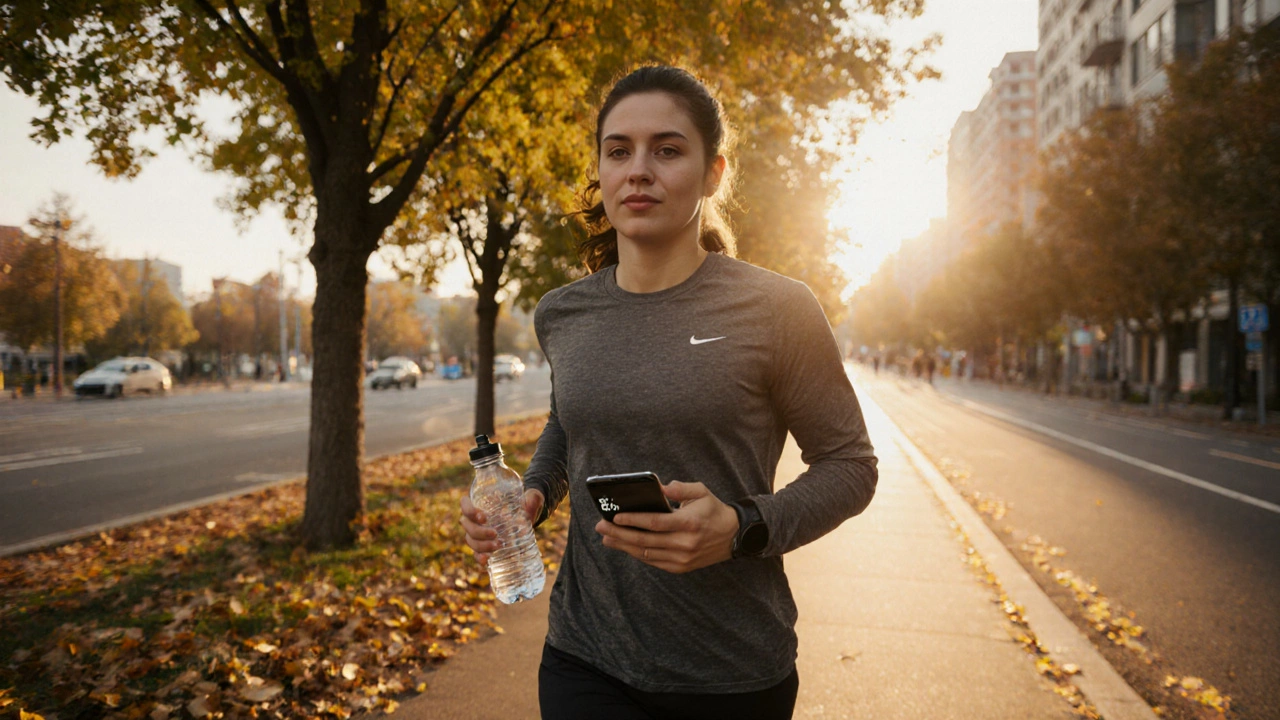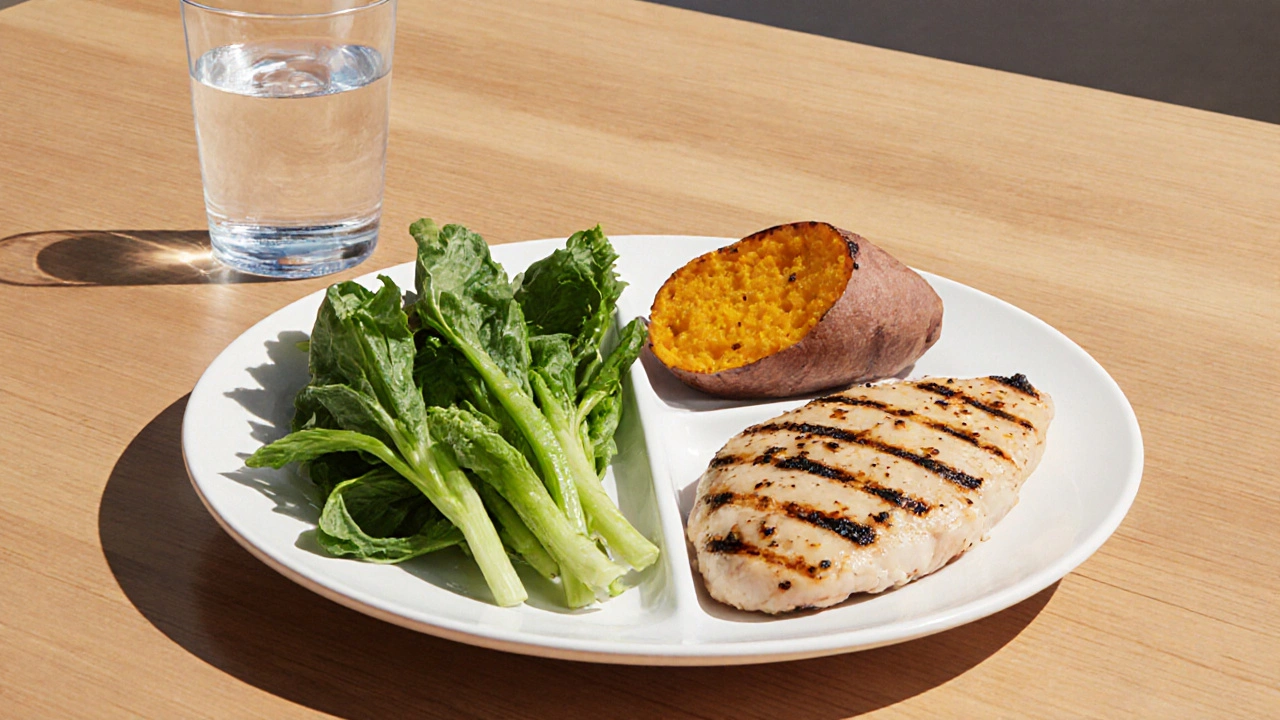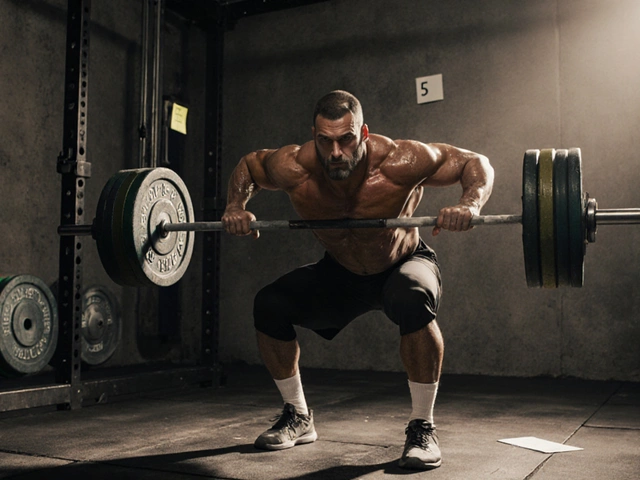
Fitness November 27, 2025
How to Get Slim in 30 Days: Realistic Steps That Actually Work
Want to get slim in 30 days? You’re not alone. Millions try every January, but most quit by week two. Why? Because they chase magic pills, extreme diets, or workouts that burn them out. The truth? You don’t need to starve or sweat for six hours a day. You need a simple, sustainable plan that works with your body, not against it.
Stop chasing quick fixes
There’s no such thing as a 30-day miracle. If someone promises you’ll drop 20 pounds in four weeks, they’re selling you a lie. Healthy fat loss? That’s about 1 to 2 pounds per week. So in 30 days, aim for 4 to 8 pounds of real, lasting fat loss-not water weight or muscle gone.
Why does this matter? Because losing weight too fast means you lose muscle, slow your metabolism, and end up heavier once you stop. Your body fights back. It thinks you’re starving. So it holds onto every calorie. That’s why yo-yo dieting happens.
Instead of chasing rapid results, focus on habits. What you do for 30 days should be something you could keep doing for 30 months. That’s how you stay slim.
Move more, not harder
You don’t need to run marathons or do CrossFit to get slim. You need to move more every day. Walking is the secret weapon most people ignore.
Start with 8,000 steps a day. That’s about 4 miles. If you’re not there yet, add 500 steps each day until you hit it. Use a cheap fitness tracker or your phone. It’s free, and it works. People who walk 8,000+ steps daily lose fat even without changing their diet-because they burn extra calories without feeling like they’re exercising.
On top of walking, do two strength sessions a week. No gym? No problem. Do bodyweight squats, push-ups, and planks at home. Three sets of 10-15 reps each. That’s it. Strength keeps your muscle up while you lose fat. Muscle burns more calories at rest. That’s how you stay slim long-term.
Eat real food, not labels
Your plate should look like this: half vegetables, a quarter protein, a quarter carbs. That’s it. No calorie counting. No macro tracking. Just focus on what’s on your plate.
Vegetables: broccoli, spinach, peppers, zucchini, kale. Eat them raw, steamed, roasted. They fill you up with almost no calories. Protein: eggs, chicken, fish, tofu, lentils. Keep portions about the size of your palm. Carbs: brown rice, oats, sweet potatoes, whole grain bread. Skip the white bread, sugary cereals, and pasta.
Here’s what to cut out:
- Sugary drinks-soda, juice, sweet coffee
- Snack foods-chips, cookies, candy
- Processed meals-frozen dinners, instant noodles
These are empty calories. They don’t fill you up. They just spike your blood sugar and make you hungry again an hour later. Replace them with water, herbal tea, or black coffee. Drink at least 2 liters a day. Sometimes thirst feels like hunger.
Sleep and stress are your hidden enemies
You can eat clean and walk every day, but if you’re sleeping 5 hours and stressed out, you won’t lose fat. Why? Cortisol. It’s the stress hormone that tells your body to hold onto belly fat. It also makes you crave sugar and carbs.
Try this: get 7-8 hours of sleep. Go to bed and wake up at the same time-even on weekends. Turn off screens an hour before bed. Read a book or listen to calm music.
Stress? Take five deep breaths when you feel overwhelmed. Walk outside for 10 minutes. Sit quietly with your eyes closed. These tiny breaks reset your nervous system. Your body stops thinking it’s under attack. That’s when fat loss kicks in.

Track progress the right way
Don’t step on the scale every day. That’s a recipe for frustration. Your weight goes up and down with water, digestion, hormones. It’s noisy data.
Do this instead:
- Take a photo every Sunday morning in the same clothes
- Measure your waist with a tape-right above your hip bones
- Notice how your clothes fit
These are real signs of progress. You might not lose 5 pounds, but your waist shrinks by an inch. Your jeans feel looser. That’s fat loss. That’s success.
What to expect after 30 days
If you follow these steps, here’s what you’ll likely see:
- 2-6 pounds of actual fat lost
- 1-2 inches off your waist
- Better sleep and more energy
- Less cravings for sugar and junk food
- Stronger muscles and better posture
You won’t look like a magazine cover. But you’ll feel stronger, lighter, and more in control. And that’s the point.
The biggest change? You’ll have built habits you can keep. You won’t need a 30-day challenge next month. You’ll just keep going.
What not to do
Don’t skip meals. That slows your metabolism and makes you binge later.
Don’t cut out carbs entirely. Your brain needs glucose. Low-carb diets work for some, but they’re hard to keep up-and often lead to rebound weight gain.
Don’t rely on shakes or detox teas. They’re expensive, unnecessary, and don’t teach you how to eat.
Don’t compare yourself to others. Everyone’s body responds differently. Your 30 days are yours alone.
Sample day to get you started
Here’s what a real day looks like:
- 7:00 AM: Drink a glass of water. Walk 20 minutes around the neighborhood.
- 8:00 AM: Breakfast-2 eggs, spinach, 1 slice whole grain toast.
- 12:00 PM: Lunch-grilled chicken salad with olive oil and vinegar.
- 3:00 PM: Snack-apple with a tablespoon of peanut butter.
- 6:00 PM: Dinner-baked salmon, roasted broccoli, half a sweet potato.
- 8:00 PM: Walk 15 minutes after dinner.
- 10:30 PM: Lights out.
No fancy ingredients. No complicated recipes. Just real food, movement, and rest.
What if you slip up?
You will. Maybe you eat pizza on Friday night. Maybe you skip a walk because you’re tired. That’s normal.
Don’t punish yourself. Don’t say, "I blew it, so I’ll start Monday." That’s how habits die.
Instead, say: "Okay, I ate too much. What’s the next good choice?" Then make it. One meal doesn’t ruin 30 days. One bad day doesn’t ruin progress. Consistency over perfection is the only rule that matters.
Next steps after 30 days
When 30 days are over, don’t stop. Keep walking. Keep eating real food. Keep sleeping well. You’ve already changed your routine. Now make it your lifestyle.
Try adding one new habit: a weekly yoga session, cooking one new healthy recipe, or tracking your water intake. Small upgrades keep you moving forward.
Getting slim in 30 days isn’t about transformation. It’s about starting. The real change happens after the challenge ends.
Can I lose 10 pounds in 30 days safely?
Losing 10 pounds in 30 days is possible, but only if you’re starting with a lot of extra weight. For most people, 4-8 pounds is realistic and safe. Losing more than that risks muscle loss, nutrient deficiencies, and metabolic slowdown. Focus on fat loss, not just the number on the scale.
Do I need to exercise to get slim in 30 days?
You don’t *need* intense exercise, but movement is essential. Walking and light strength training help you lose fat instead of muscle. Without movement, you’ll lose weight, but you’ll look softer-not slim. Exercise shapes your body. Diet just reduces the size.
What’s the best diet for losing weight fast?
There’s no "best" diet that works for everyone. The most effective one is the one you can stick to. Eating whole foods, cutting sugar, drinking water, and controlling portions works better than any fad diet. Keto, intermittent fasting, or vegan diets can help-but only if they fit your life. Don’t chase trends. Build habits.
Why am I not losing weight even though I’m eating healthy?
You might be underestimating portions, drinking sugary beverages, or not sleeping enough. Stress and lack of sleep raise cortisol, which blocks fat loss. Also, if you’re not moving enough, your body doesn’t burn extra calories. Track your steps, sleep, and water intake. Often, the issue isn’t food-it’s the other habits.
Can I get slim without counting calories?
Yes. Most people overcomplicate weight loss by counting calories. Focus on food quality instead. Fill half your plate with vegetables, eat protein with every meal, avoid sugar and processed snacks, and stop eating when you’re 80% full. These habits naturally reduce calories without needing a calculator.




